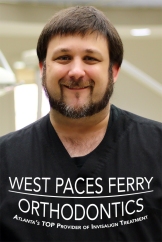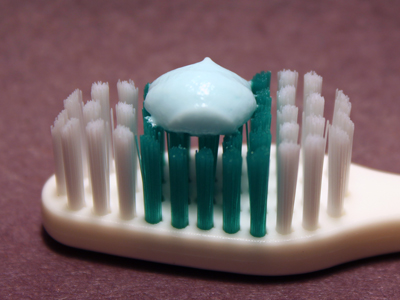
By: Adrian Pierce
Invisalign® aligners represent the latest in dental technology for straightening crooked teeth using flexible, transparent plastic aligners instead of metal bands and wires. Invisalign aligners also correct overbites, underbites, narrow dental arches, and unattractive gaps between teeth. Made from a hypoallergenic, polyurethane compound, Invisalign aligners are nearly invisible mouth trays custom-made from dental impressions taken by a dentist specializing in orthodontics.
Invisalign can reposition severely crooked teeth under the care of an experienced orthodontist. The less experienced orthodontist may need to use braces to straighten extreme underbites and overbites. In most cases of severe underbites and overbites, the jaw may need to be shifted to fully correct abnormally positioned teeth. Invisalign can reposition the jaw with the aid of removable elastics.
Amazingly Comfortable, Amazingly Effective
Several sets of Invisalign aligners are developed from a patient’s dental impression. Each aligner is slightly different in regards to shape and amount of pressure affecting teeth that need to be moved. Every week, Invisalign patients wear a new aligner. Each new aligner provides different applications of forces generated by modified aligner dimensions. Patients experience gradual repositioning of teeth without the discomfort and inconvenience of metal braces.
No Soreness, No Gum Irritation, and No Bleeding
Invisalign aligners promote subtle movement of teeth but without the soreness of your lips and gums associated with braces. Also, the ability to remove Invisalign trays improve the level of oral hygiene practiced by people using these trays as opposed to braces glued to teeth. People wearing metal braces can suffer from embarrassing halitosis as well as staining and pitting of teeth that require further treatment following removal of glued-on brackets due to difficulties with oral hygiene.
Invisalign aligners can be easily inserted and removed. You do not ha

ve to visit your orthodontist every month for adjusting brackets and wires. Metal braces require regular adjustment to make teeth move into straighter positions. Soreness of the mouth following an adjustment is a common complaint of people wearing metal braces.
So Comfortable You Forget You are Wearing Invisalign Aligners
 Worn 22 hours a day, Invisalign aligners move teeth into desired positions within six months to two years. Also, you can discreetly remove Invisalign trays to eat or brush their teeth when out in public, so nobody will even know you are wearing them. And best of all, Invisalign is made from flexible materials that do not irritate gums or force teeth to reposition too quickly. Simple but powerfully effective, Invisalign trays slide easily over your teeth to give you a beautiful smile with straight teeth that you’ve always wanted.
Worn 22 hours a day, Invisalign aligners move teeth into desired positions within six months to two years. Also, you can discreetly remove Invisalign trays to eat or brush their teeth when out in public, so nobody will even know you are wearing them. And best of all, Invisalign is made from flexible materials that do not irritate gums or force teeth to reposition too quickly. Simple but powerfully effective, Invisalign trays slide easily over your teeth to give you a beautiful smile with straight teeth that you’ve always wanted.





 Although wisdom teeth are all-too-
Although wisdom teeth are all-too-










 By: Kenny Hackett
By: Kenny Hackett

 By:
By: 


 They can also continue playing musical instruments properly, without braces getting in the way. With braces, there is a long list of foods your teen shouldn’t eat, from popcorn to apples and raw carrots. With Invisalign, there are no such restrictions. The removable aligners make it easy to brush and floss normally to maintain proper oral hygiene.
They can also continue playing musical instruments properly, without braces getting in the way. With braces, there is a long list of foods your teen shouldn’t eat, from popcorn to apples and raw carrots. With Invisalign, there are no such restrictions. The removable aligners make it easy to brush and floss normally to maintain proper oral hygiene.

